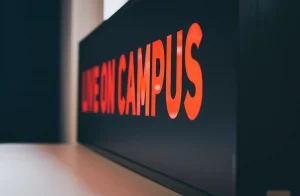At Applied Worldwide, we are always improving our applied pedagogy with unique sociology assignments. Applying sociological concepts can be a great way to solidify an understanding of them. Doing so also prepares our students to apply their sociological skills and knowledge, empowering them as professionals. This strategic planning video assignment challenges students to apply sociology by identifying a strategic plan implemented by an organization, analyzing it sociologically, and presenting that analysis through a contemporary format: video.
Strategic Planning and Applied Sociology
Strategic planning is the organizational process of developing a strategy and planning for a sustainable future. Organizations typically create strategic plans that span a few years, and sometimes even decades. A strategic plan includes goals that can be monitored and evaluated along with a strategy to reach those goals.
The most obvious skill sociologists have when it comes to strategic planning is research. Sociology students learn a wide range of research methods through their university training, including statistical techniques as well as in-depth interviewing skills. Not only do sociologists acquire the skills to collect data and evidence in a variety of forms, they also learn how to analyze that data uniquely. Data collection and analysis skills are imperative to the monitoring and evaluation of strategic plans.
Depending on the organization, a strategic plan might include goals focused on social justice, equity, and general improvement for communities. When it comes to organizations focused on serving communities, whether those are governmental or non-governmental, sociologists have a plethora of substantive knowledge to contribute. For example, New York City’s OneNYC 2050 strategic plan includes an initiative for place-based community planning. With an understanding of collective identity, sociologists can help establish place-making projects to push that initiative forward.
With the internet at our fingertips and organizations all around the world developing strategic plans, students should have no issue finding a strategic plan that fits into their sociological interests!
Creating Video Content
While developing an understanding of strategic planning and the ability to apply sociological concepts are solid learning objectives as they stand, it is always a plus when we can hit two birds with one stone in our coursework. The second bird we hit with this assignment is video creation.
While creating video content may seem tangentially related to sociology, I would argue it is an important skill for any professional during this technological era. As professionals, we are often tasked with communicating information to colleagues, clients, students, etc. in an efficient and effective manner. Video creation not only helps us be efficient and effective in our communication, but it also allows us to tap into what is arguably the most popular form of media of our time: user-created video content.
According to a recent study from the Consumer Technology Association, consumption of traditional media outlets like television news is on the decline while social media outlets with video sharing capabilities are dominating the way we currently consume media. That means if we have important messages we want to reach a broad audience, video content may be the best route to success.
Video Creation as an Applied Sociology Assignment
By bringing sociology, strategic planning, and video creation together, students get the opportunity to demonstrate the importance of applied sociology through an exciting medium! While creating a short video may seem like a huge task to those who haven’t done it before, there are plenty of free programs that make creating and editing video content accessible to everyone, including beginners.
Below, I walk through each step of creating a sociology and strategic planning video for a sociology assignment, from accessing video editing software, to finding visual and audio content for the video.
Accessing Video Editing Software
It is a good idea to see what software your institution has access to before deciding what software to familiarize yourself with. If your institution provides free access to video editing software, that can be a great place to start. Students with laptops may also already have access to video editing software such as iMovie on MacBooks.
If students cannot gain access through their institution, there are plenty of free web-based editors that can work for this assignment. WeVideo, for example, allows users to create up to 5 minutes of video per month for free using their web-based editor. The popular design platform Canva also offers a free online video editor where students can choose from a library of templates to get their creative juices flowing. Although, it is important to note that only some elements are available for free on Canva while others require a premium subscription.
Other great free options—especially for students already using them—are TikTok and the Instagram Reels feature. Regardless of the editing software used, students will also need some guidance on where to find visual content to import into their videos.
Accessing Free Visual Content for this Sociology Assignment
For this assignment, I would suggest providing students with a list of places they can access free stock videos and photos. Our go-too platforms for free stock images and videos are Pexels and Unsplash. Using these platforms, students can search by topic, location, and more to find free visuals for their videos. From there, they will have to download the videos and images to import them into their video projects.
Other options for free stock videos include MotionElements and Videvo, both of which have a limited number of free videos students can browse using search filter options. Lastly, there is also Pixabay, which I find to be comparable to Pexels and Unsplash.
Including Audio Elements
Visual content isn’t the only aspect of video creation. Including audio in a video has potential to bump up engagement and communication to the next level.
Audio elements in the context of this assignment might include music and VoiceOver, where students include them talking in the background of the video. If videos are meant to stay in the classroom, any audio is an option. However, if the goal is for students to share their videos outside of class, audio selection should be more precise.
Pixabay also includes a library of music for creators to add to videos without worrying about copyright infringement. Another option for royalty free music is Bensound. However, these are only a couple of many options. Students may even already have their go-to sources, especially if they are already creating videos.
Advice for Instructors New to Video Editing Software
It is always a good idea to get to know the software we ask our students to use. With that said, a good first step is to choose an editing software and get familiar with it. My advice is to let students know you can assist them with that editing software, but if they choose to venture toward another one then they may be on their own when it comes to troubleshooting issues. However, given the amount of young adults creating video content for social media and other outlets, it’s likely that students will be the ones helping us with troubleshooting.
Final Thoughts on this Applied Sociology Assignment
The outline I provide here for this sociology assignment is really just the tip of the iceberg of possibilities. Including video creation in the classroom means students learn a whole new way of presenting and communicating ideas.
As academics, it is typical to teach what we know. In the case of presenting ideas, that is usually the tried and true conference presentation that includes a PowerPoint visual. While teaching what we know is a sure way to avoid mistakes, it is also a sure way to plateau our potential as teachers. Bringing video content creation into the sociology classroom as a new way of presenting ideas can provide a refreshing and creative outlet for students while allowing teachers to expand their instruction toolkits.








